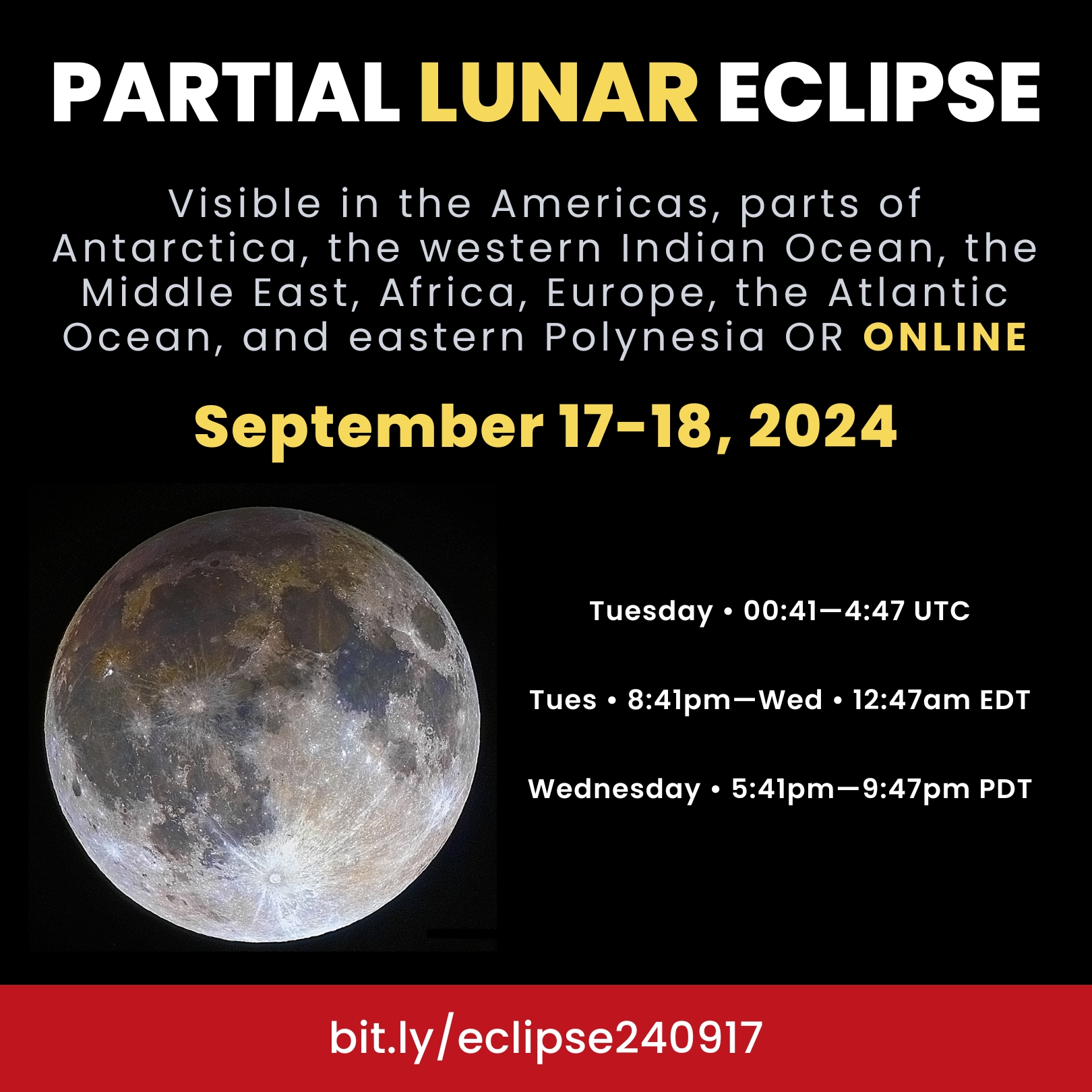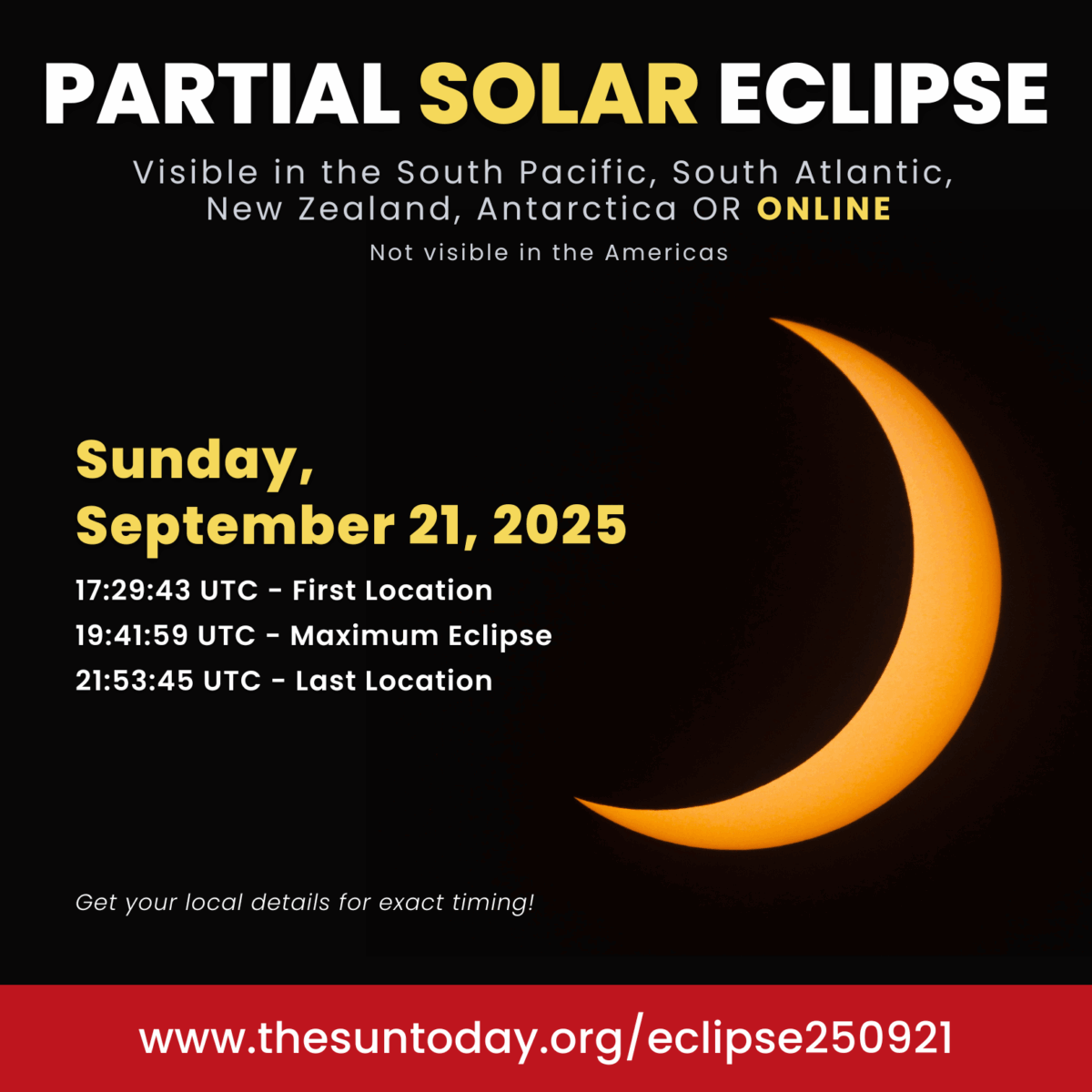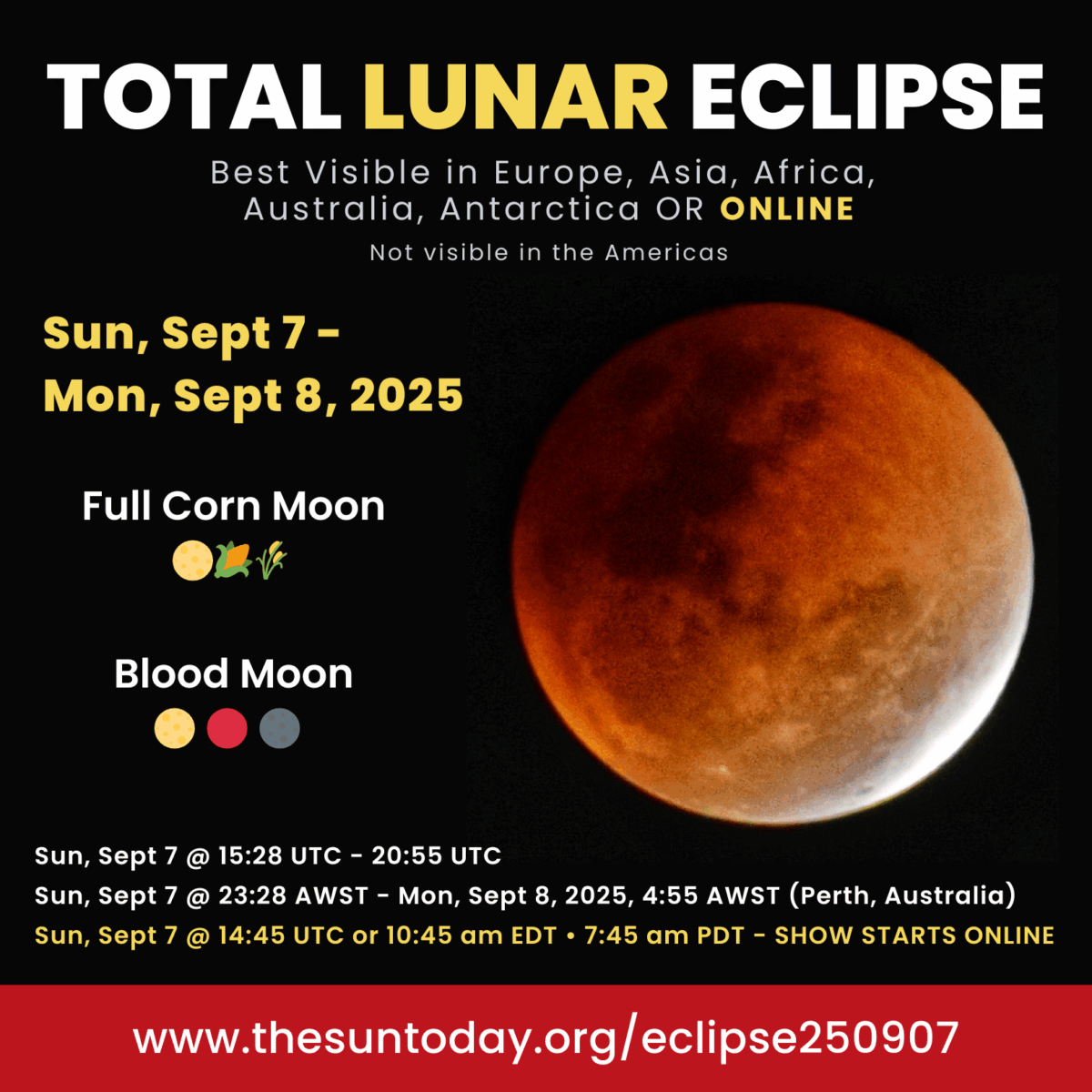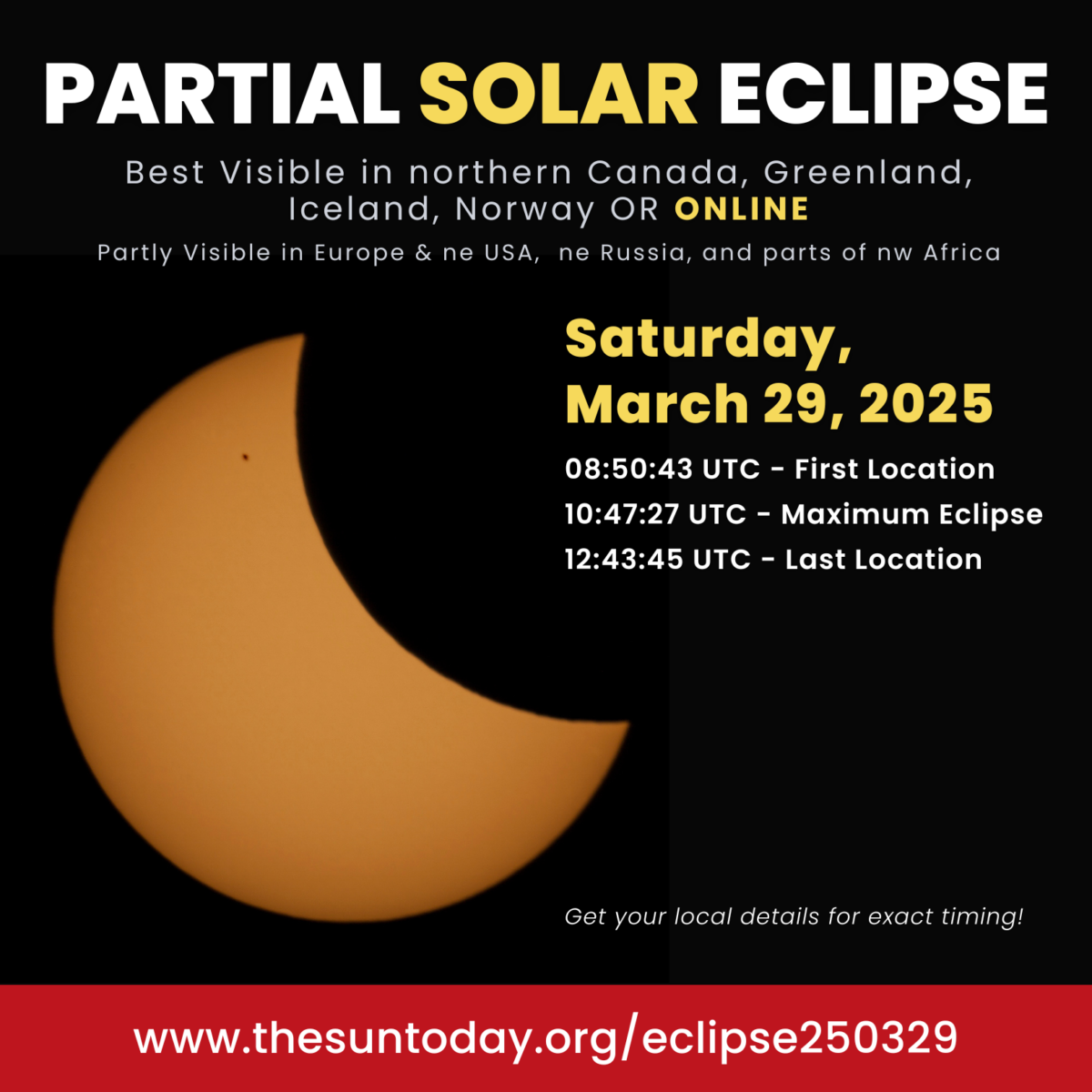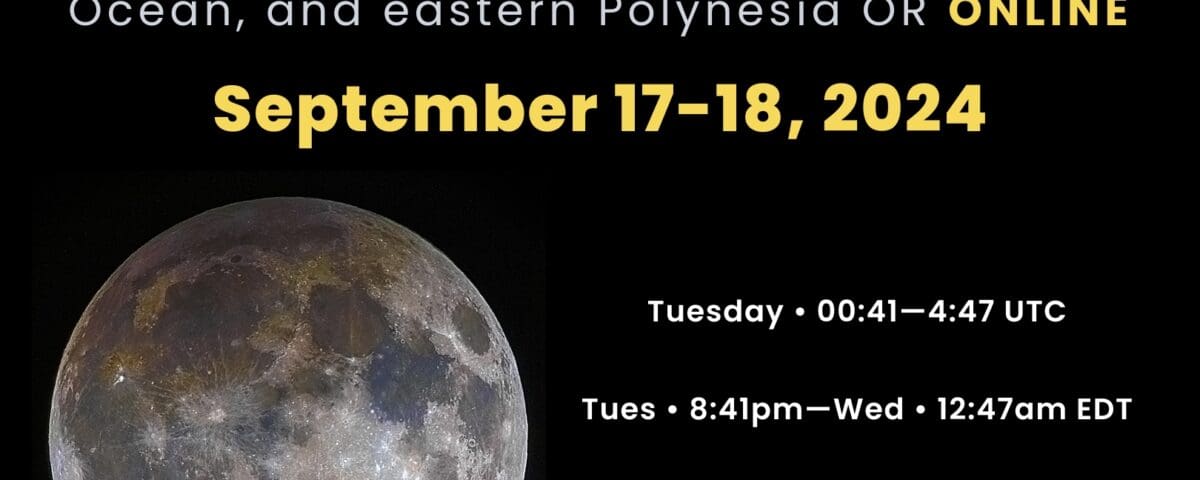
The Full Harvest Corn Supermoon brings a fun event today during the night (Tuesday, September 18, 2024 • 00:41–4:47:26 UTC or Tuesday, September 17 • 8:41 pm EDT – Wednesday, September 18, 2024 • 12:26 am EDT) for those in the Americas, parts of Antarctica, the western Indian Ocean, the Middle East, Africa, Europe, the Atlantic Ocean, and eastern Polynesia.
![]()
![]()
![]() Earth casts a shadow on the Moon – A lunar eclipse.
Earth casts a shadow on the Moon – A lunar eclipse.
EarthSky made a small introduction video to this eclipse.
This is a partial lunar eclipse. For this one, only a small part (3.5%) of the Moon will enter Earth’s umbral shadow, the dark part. Most of the time, the eclipse will be a penumbral eclipse, where only the outer shadow (the penumbra) hits the Moon. This means that there will be a little bit of darkening of the moon from Earth’s penumbral shadow, but most will be a very faint change on an edge of the Moon from Earth’s penumbral shadow.
So, this is not a ton of action. But maybe some will feel it? ![]()
![]()
![]()
- Find out much more at Earthsky
- And at timeanddate.com
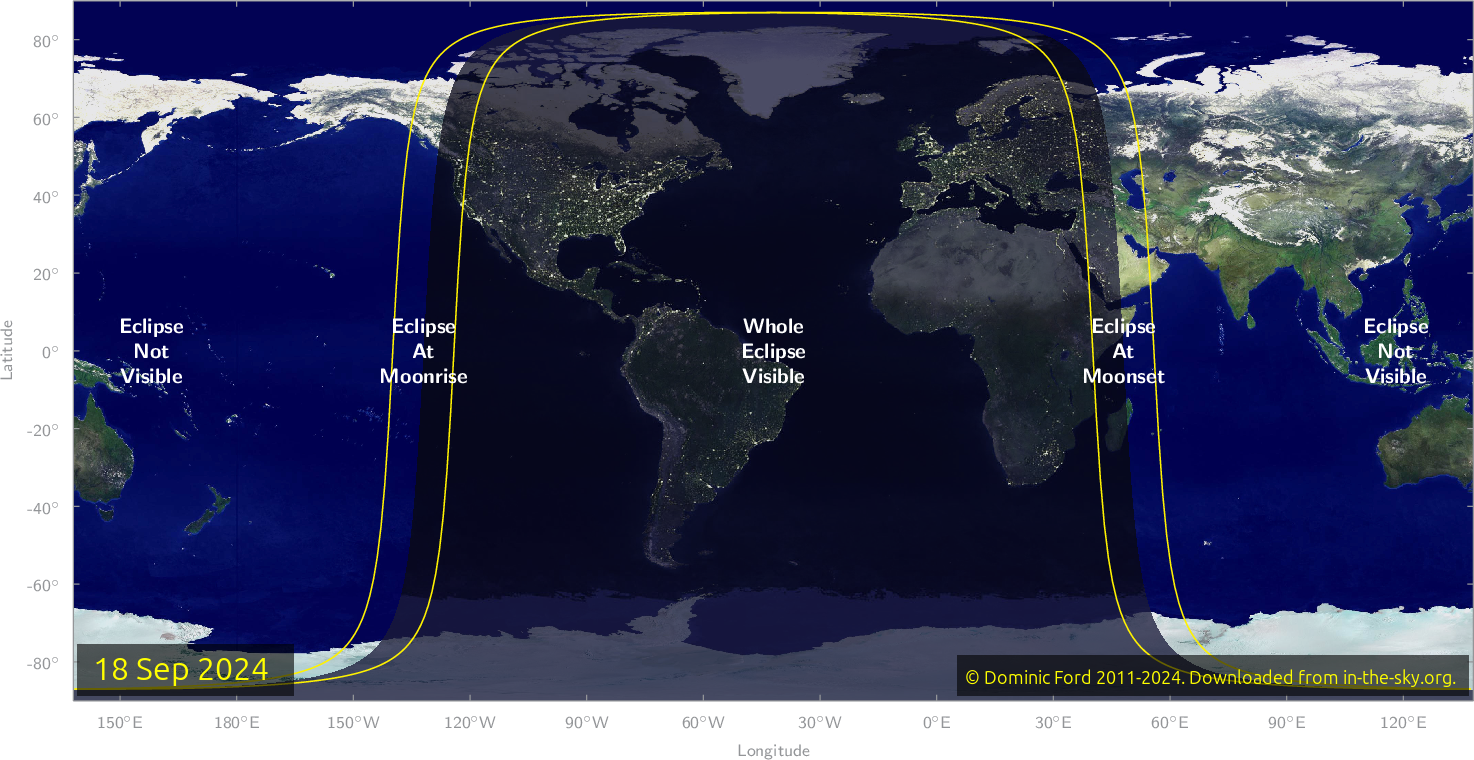
September 17-18, 2024 Partial Lunar Eclipse Visibility Map. CREDIT: Dominic Ford, in-the-sky.org
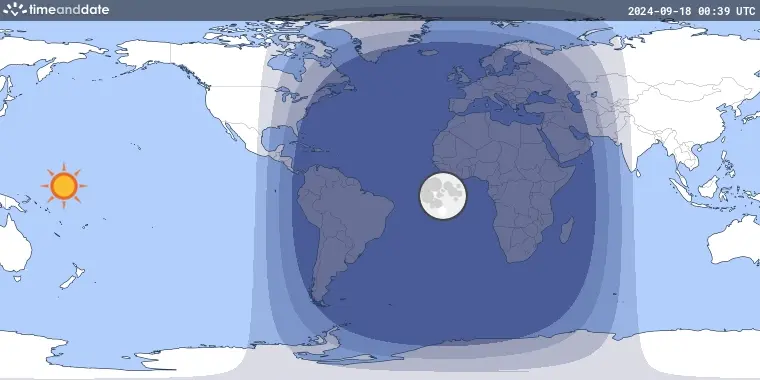
The animation shows where the September 17-18, 2024 partial lunar eclipse is visible during the night (dark “wave” slowly moving across the Earth’s surface). CREDIT: timeanddate.com
During a lunar eclipse, Earth gets in the way of the sun’s light hitting the moon. That means that a full moon fades away during the night as Earth’s shadow covers it up.

Credit: Rice Space Institute
A Penumbral Lunar Eclipse occurs when the Moon passes through Earth’s penumbra. The penumbra causes a subtle dimming of the lunar surface, which is only visible to the naked eye when about 70% of the Moon’s diameter has been immersed into Earth’s penumbra.
A special type of penumbral eclipse is a total penumbral lunar eclipse, during which the Moon lies exclusively within Earth’s penumbra. Total penumbral eclipses are rare, and when these occur, the portion of the Moon closest to the umbra may appear slightly darker than the rest of the lunar disk.
The September 17-18, 2024, eclipse is a “partial lunar eclipse” because only a tiny part of the Moon enters Earth’s darker umbral shadow. It is barely partial because only 3.5% of the moon is covered by Earth’s umbral shadow. Most observers will not see the partial part and only see a penumbral lunar eclipse.
Find Out More About Lunar Eclipses
Livestreams for the September 17-18, 2024, partial lunar eclipse
Eclipse Season
This is the first eclipse of the September – October 2024 eclipse season. Every year, we get a collection of 4 to 7 eclipses somewhere on Earth, either lunar, solar, partial, or total. The second eclipse is the October 2, 2024, annular solar eclipse.
These eclipses come in seasons, a 35-day period with typically two eclipses, sometimes three. There are usually two seasons per year. This is the second of two seasons for 2024.
Enjoy, and there will be more to come!
For the first eclipse season, we had a penumbral lunar eclipse on March 24-25, 2024, and a very well-observed total solar eclipse on April 8, 2024.
The second eclipse season for 2024 is this eclipse and the October 2, 2024, annular solar eclipse. The annular eclipse will only be visible in the Pacific Ocean off the coast of Chile and a very small stretch of Chile and Argentina near the bottom tip of South America. Make your travel plans soon; it will be quite a trip unless you live there. This second eclipse season almost had a third eclipse on October 17, 2024, but it will be a near miss, so it is almost a lunar eclipse.


